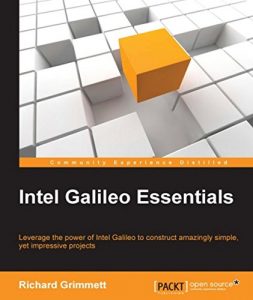About This Book
- Learn how to connect additional hardware to the Intel Galileo to easily create complex robots
- Understand GPIO pins on the Galileo and how to use them
- Control a DC motor so that your unit can drive wheels or tracks.
Who This Book Is For
This book is for anyone who has ever been curious about using the Intel Galileo to create electronics projects. Some programming background is useful, but if you know how to use a personal computer, with the aid of the step-by-step instructions in this book, you can construct complex electronics projects that use the Intel Galileo.
What You Will Learn
- Access the Linux system that is the basis for Galileo to add even more complex hardware and software
- Install and use the software development environment and connect to the Galileo and develop programs for it
- Add a simple display to the Galileo
- Connect external HW to the GPIO pins
- Control DC motors with the Galileo
- Add sensors to a Galileo-based project
- Access your Galileo wirelessly
- Understand the basics of sketches, include files, and HW support
In Detail
Intel Galileo Essentials provides step-by-step instructions on how to use the Galileo in Do-It-Yourself electronics projects. We begin by powering up the Galileo and loading the development system to get started. Post this, we look at GPIO capability in general along with the basics of programming the GPIO pins, also learning how to connect external HW to the GPIO pins. Moving on, we begin connecting a display to the Galileo, while learning the important points such as importing the support files, programming text and graphics, and getting input from a touchscreen. More significantly, we start controlling motors, adding sensors, and learning how to communicate wirelessly with your Galileo projects.
We conclude by building a wide variety of projects with the Galileo such as controlling servos for walking robots, hacking toy robots with the Galileo, and creating an ROV (Remotely Operated Vehicle) with the Galileo.






